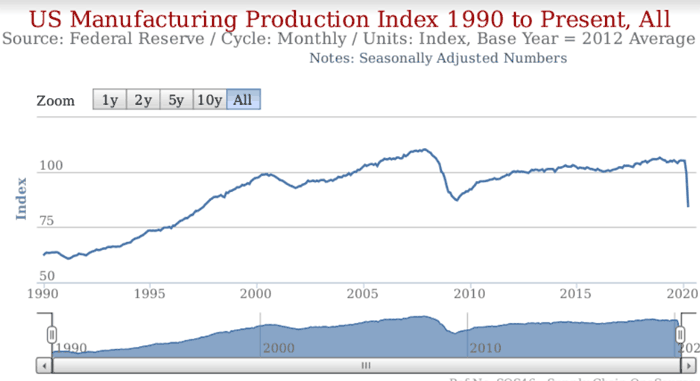The Purchasing Managers Index or PMI from the Institute for Supply Management (ISM) came in strong for July, at a level of 54.2, up 1.6 percentage points from the June reading of 52.6. That as announced Monday by ISM.
Supply Chain Digest Says... |
 |
| ISM report noted that many manufacturers in its survey said demand was weak or slow, and that they were laying off workers. |
 |
What do you say? |
| Click here to send us your comments |
 |
| Click here to see reader feedback |
|
|
That was the nicely above the 50 mark of the index that separates US manufacturing expansion, and a bit above consensus estimates.
It also represents the second straight month of expansion, in a very positive sign for the economy.
Some commentator noted that the score of 54.2 for July was the highest level for the index in some 17 months. That is true, but the implication of some stories is that that means US manufacturing levels are at 17-month highs.
No so.
The PMI measures changes from month to month. So while the score of 54.2 is in fact the highest reading for the index in 17 months, it simply means the highest percent of companies in the PMI survey saw expansion in July versus June than at any time in the past 17 months.
Actual US manufacturing output remains well depressed versus pre-pandemic level.
As seen in the chart below, before March, the index hovered around 104-105. What that means is the US manufacturing was staying between 4-5% above baseline 2012 levels (index = 100) - meaning growth of well less than 1% annually now 8 years later.
The index then dropped to 99 in March before collapsing to 83 and 87 in April and then May, rebounding a bit to 93 in June, though that is still 7% lower than 2012.

Source: SCDigest
The number for July, due out in mid-August, is likely to show still more improvement, but should still be well below those pre-pandemic levels.
(Article Continued Below)
|
CATEGORY SPONSOR: SOFTEON |
|
|
| |
|
|
Still, there is other recent good news on the manufacturing front.
Just yesterday, the US Commerce Dept. announced that new orders for U.S.-made goods increased more than expected in June, an indicator that the manufacturing sector was stabilizing, though the on-going COVID-19 crisis leaves the environment still very uncertain.
The government said Tuesday factory orders rose 6.2%, led by growth in demand for motor vehicles, after jumping 7.7% in May. But again, these are changes from the previous month. Despite the second straight monthly gain, orders remained well below their February level.
Factory orders actually decreased 10.1% in June year-over-year.
And the ISM report noted that many manufacturers in its survey said demand was weak or slow, and that they were laying off workers.
So whether the US manufacturing glass is half empty or half full is a matter of opinion.
Anything to add on the analysis of US manufacturing data? Let us know your thoughts at the Feedback section below.
Your Comments/Feedback
|